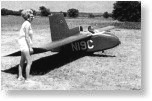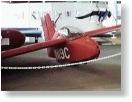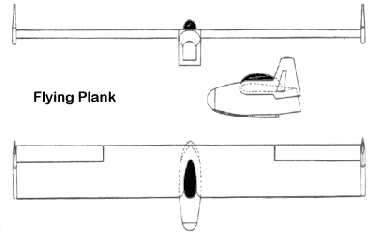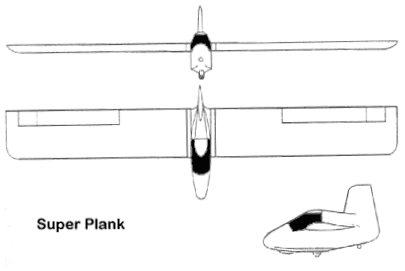| http://www.survol.cjb.net |
Backstrom EPB-1A "Flying Plank"
 |
 |
 |
| A powered Flying Plank |
The central fin version | |
| (click on the pictures to enlarge them in a new window) | ||
The Flying Plank was a small glider developed in 1954 by Al Backstrom assisted by Phil Easley and Jack Powell as an attempt to combine minimum size and easy construction with reasonable performance. The prototype EPB-1 was used for drag reduction tests at the Mississippi State College. It used a modified Abrial reflex airfoil. Plans for the 1A version were sold and a number built by amateurs, most with twin wingtip rudders, but some were completed with a central fin and rudder at the end of a lengthened fuselage (EPB1-C) to improve performance and control. Span have varied up to 9.30 m / 30.5 ft. A self-launching model was developed later.
Except for the fiberglass nose cap for the fuselage, standard wood structure was used throughout, and construction time for an experience woodworker was in the neighborhood of 600 hours. More than 150 sets of plans were sold.
An improved version, the "Super Plank", was under development in 1973. At least two of them were built, by Larry Linville and Dennis Harmon.
The Flying Plank concept was used by Jim Marske when building his prototype XM-1.
| Characteristics and performance of the EPB-1A | |
| Wing span | 7.62 m |
| Wing area | 9.29 m2 |
| Aspect ratio | 6.5 |
| Empty weight | 68 kg |
| Gross weight | 159 kg |
| Airfoil | Abrial 15% |
| Glide ratio | 20:1 |
| Sink rate | 1.07 m/sec |

